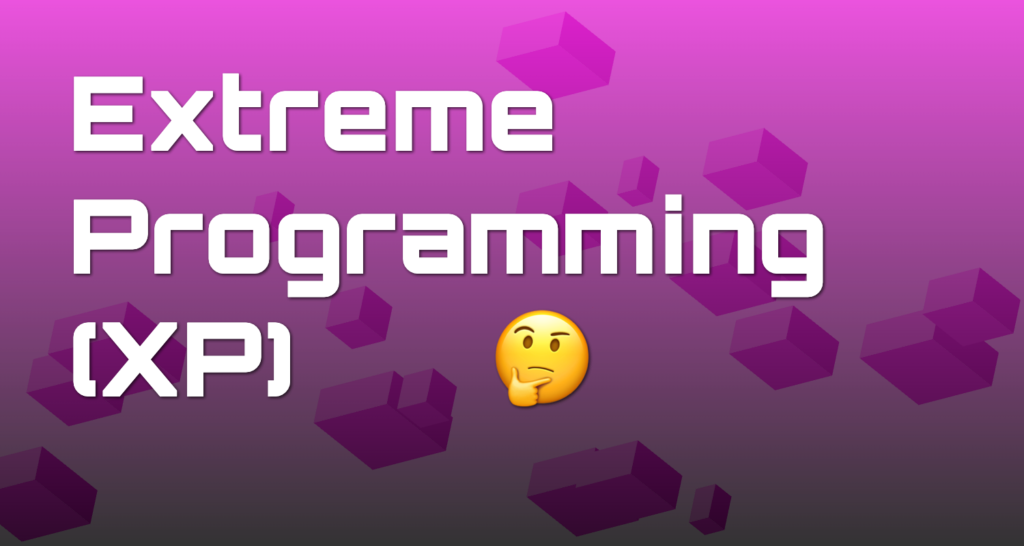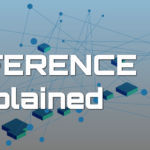Dive deep into the world of software development methodologies as we break down agile, scrum, kanban, waterfall, devops, lean, and extreme programming (XP). Learn how these frameworks can streamline your projects and improve efficiency. We will start by explaining the basic concepts so you are equipped to pick the methodology that best fits your your needs.
Agile
Emphasizing Cross-Functionality and Flexibility
Agile is a philosophy and group of methodologies that emphasize cross-functionality and flexibility. It promotes iterative and incremental development, allowing teams to adapt to changing requirements and deliver value to customers more effectively.
Agile prioritizes early and continuous delivery of valuable functionality that satisfies customers.
Many frameworks and methodologies (including, at times, lean) are often folded under the umbrella of agile. We decided to do so too.

SCRUM
Adaptive Solutions for Complex Problems

Scrum is a form of agile that focuses on delivering value through adaptive solutions for complex problems. It is based on the principles of transparency, inspection, and adaptation. Scrum teams work in short iterations called sprints, during which they collaborate closely to deliver working increments of the product.
Scrum Sprint Board for a Software Project
Below is an ASCII diagram representing a fictive Scrum Sprint Board for a software project. It showcases a running sprint with different fictive stories for design, development, and analysis of a feature in various states of completion.
+------------------+------------------+------------------+------------------+
| To Do | In Progress | QA/Test | Done |
+------------------+------------------+------------------+------------------+
| Design Story | | | |
+------------------+------------------+------------------+------------------+
| | Dev Story 1 | | |
+------------------+------------------+------------------+------------------+
| | Dev Story 2 | | |
+------------------+------------------+------------------+------------------+
| | | Test Story 1 | |
+------------------+------------------+------------------+------------------+
| | | Test Story 2 | |
+------------------+------------------+------------------+------------------+
| | | | Analysis Story |
+------------------+------------------+------------------+------------------+
In the “To Do” column, we have a “Design Story” that is yet to be started. In the “In Progress” column, there are two development stories, namely “Dev Story 1” and “Dev Story 2,” which are currently being worked on.
The “QA/Test” column consists of two test stories, “Test Story 1” and “Test Story 2,” which are in the testing phase. Finally, in the “Done” column, we have an “Analysis Story” that has been completed.
This Scrum Sprint Board provides a visual representation of the software project’s progress and helps the team track the status of different stories throughout the sprint.
| Aspect of Scrum | Description |
|---|---|
| Focus | Scrum is designed to deliver value by producing adaptive solutions for complex challenges, prioritizing effective responses to change over following a fixed plan. |
| Core Principles | Operates on principles of transparency, inspection, and adaptation, enabling continuous improvement and responsiveness to evolving project demands. |
| Sprints | Uses short development cycles called sprints, typically lasting 2-4 weeks, to compartmentalize work into manageable segments and foster regular progress. |
| Team Collaboration | Scrum teams collaborate intensively throughout sprints, often with daily stand-up meetings to discuss progress and obstacles, ensuring all members are aligned and engaged. |
| Product Increments | Aims to deliver working increments of the product at the end of each sprint, demonstrating tangible progress and allowing for incremental improvement based on feedback. |
KANBAN
Visualizing Work and Maximizing Flow

Kanban is another agile methodology that visualizes work to limit work-in-progress and maximize flow. It uses a Kanban board to provide a clear overview of the tasks at hand, their status, and the team’s capacity. By visualizing the workflow, teams can identify bottlenecks and optimize their processes.
A Fictive Kanban Board for a Software Project
A Kanban board is a visual tool used to manage and track work in progress. It helps teams visualize their workflow and improve efficiency.
+---------------------+---------------------+---------------------+ | To Do | In Progress | Done | +---------------------+---------------------+---------------------+ | | | | | - User story 1 | - User story 2 | - User story 5 | | - User story 3 | | | | | | | +---------------------+---------------------+---------------------+
The Kanban board is divided into three columns: “To Do,” “In Progress,” and “Done.” Each column represents a different stage of the software development process.
In the “To Do” column, user stories that have not yet been started are listed. User stories are small, actionable units of work that represent a specific feature or functionality. In this example, user stories 1 and 3 are in the “To Do” column.
The “In Progress” column represents user stories that are currently being worked on. User story 2 is in progress in this example.
The “Done” column represents user stories that have been completed. User stories 5 is marked as done in this example.
Teams can use this Kanban board to track the progress of their software project and ensure that work is flowing smoothly through each stage of development.
| Aspect of Kanban | Description |
|---|---|
| Origin | Kanban was developed in the 1940s at Toyota in Japan to improve manufacturing efficiency and manage inventory through visual management tools. |
| Kanban Boards | Utilizes boards that visually display work at various stages using cards (for tasks) and columns (for stages of the process), enhancing transparency and tracking. |
| Work-in-Progress Limits | Sets limits on the number of tasks at any stage to prevent bottlenecks and promote task completion, thereby avoiding overload and maintaining quality. |
| Visual Signals | Uses visual signals, like moving Kanban cards across the board, to show progress and help quickly identify workflow status and issues. |
| Continuous Flow | Aims for a steady workflow to minimize cycle times and interruptions, ensuring continuous progress and delivery. |
| Flexibility | Kanban is adaptable to various team needs and does not enforce strict roles or ceremonies, making it suitable for different organizational contexts. |
| Focus on Bottlenecks | By visualizing processes and setting WIP limits, Kanban helps identify and address workflow bottlenecks efficiently, ensuring smoother operations. |
| Feedback Loops | Encourages routine feedback through meetings like daily stand-ups and review sessions to align team efforts and foster improvements. |
| Improvement through Analytics | Frequently employs metrics such as lead time and cycle time for process optimization and to enhance productivity insights. |
| Scalability | Kanban scales well across different project sizes and organizational levels, from small teams to large enterprises, making it a versatile tool for managing work. |
DevOps
Bridging Development and Operations

DevOps is a set of practices that combine software development (Dev) and IT operations (Ops) to shorten the development life cycle. It aims to improve collaboration and communication between development and operations teams, enabling faster and more reliable software delivery.
The DevOps Lifecycle for a Software Application
DevOps is a crucial methodology that brings together software development and operations teams to streamline the software development lifecycle. By integrating continuous integration, continuous delivery, and continuous deployment, DevOps ensures faster and more reliable software delivery.
+------------------------+
| Development |
+------------------------+
| |
v |
+------------------------+
| Testing |
+------------------------+
| |
v |
+------------------------+
| Deployment |
+------------------------+
| |
v |
+------------------------+
| Monitoring |
+------------------------+
Development
In the development phase, the software application is built by the development team. They write code, collaborate on features, and ensure the application meets the requirements.
Testing
Once development is complete, the software application undergoes rigorous testing. This phase ensures that the application functions as expected and any bugs or issues are identified and resolved before deployment.
Deployment
After successful testing, the software application is deployed to the production environment. This phase involves configuring the infrastructure, setting up servers, and deploying the application to the target environment.
Monitoring
Once the software application is deployed, monitoring tools are used to track its performance, detect any issues, and gather insights. This phase ensures that the application is running smoothly and any performance or security issues are addressed promptly.
By following this DevOps lifecycle, software applications can be developed, tested, deployed, and monitored efficiently, resulting in faster time-to-market, improved quality, and enhanced customer satisfaction.
| Aspect of DevOps | Description |
|---|---|
| Integration | DevOps centers on the continuous integration of development and operations teams to reduce silos, increase collaboration, and improve code quality through rapid feedback loops. |
| Continuous Delivery | Emphasizes the importance of continuous delivery processes where code changes are automatically built, tested, and prepared for a release to production, enhancing speed and reliability. |
| Automation | Strong focus on automation in testing, deployment, and infrastructure management to minimize manual work, reduce errors, and increase efficiency. |
| Monitoring and Feedback | Uses real-time monitoring of the production environment to swiftly respond to issues, coupled with immediate feedback to developers, ensuring that the system remains robust in real-world conditions. |
| Cultural Shift | Advocates for a cultural shift within organizations to promote greater understanding, shared responsibilities, and collaborative work practices across traditionally separate teams. |
Dedicated Full Stack Developers
Hiring Full Stack developers gives businesses access to pros proficient in various technologies and frameworks. Their versatility streamlines collaboration, leading to faster development and enhanced efficiency.
LEAN
Minimizing Waste and Maximizing Value

Lean is a methodology focused on minimizing waste and maximizing value. It originated from the manufacturing industry but has been widely adopted in software development. Lean principles include identifying and eliminating non-value-added activities, optimizing flow, and continuously improving processes.
| Aspect of Lean | Description |
|---|---|
| Origin | Lean methodology originated in the manufacturing industry to enhance efficiency by minimizing waste and has since been adapted widely in software development. |
| Minimizing Waste | Focuses on identifying and eliminating non-value-added activities to streamline operations and reduce unnecessary costs. |
| Maximizing Value | Prioritizes maximizing value by ensuring that every step in a process adds worth to the customer, thereby optimizing resource use and product quality. |
| Optimizing Flow | Aims to optimize the flow of processes to ensure smooth operations and continuous delivery of products or services without delays or bottlenecks. |
| Continuous Improvement | Encourages ongoing efforts to improve processes, which involves regular evaluation and adjustments to practices to enhance overall productivity and effectiveness. |
Would you like to get engaged with professional Specialists?
We are a software development team with extensive development experience in the Hybrid and Crossplatform Applications development space. Let’s discuss your needs and requirements to find your best fit.
Extreme Programming (XP)
Improving Software Quality and Responsiveness

Extreme Programming (XP) is an agile framework that aims to improve software quality and responsiveness to changing customer requirements. It emphasizes practices such as continuous integration, test-driven development, pair programming, and frequent customer collaboration. By embracing these practices, XP teams can deliver high-quality software with a focus on customer satisfaction.
| Aspect of Extreme Programming (XP) | Description |
|---|---|
| Focus | XP is designed to improve software quality and responsiveness to evolving customer needs through flexible and rapid adaptation to change. |
| Continuous Integration | Emphasizes the practice of continuously merging all working copies of developers’ code with the shared mainline several times a day to prevent integration issues. |
| Test-Driven Development | Advocates for writing tests before writing the necessary code to pass the tests, ensuring that software is built with a focus on fulfilling requirements and functionality. |
| Pair Programming | Encourages developers to work in pairs, sharing a single workstation to improve code quality and enhance collaborative learning within the team. |
| Frequent Customer Collaboration | Stresses the importance of regular and frequent collaboration with customers to ensure the development process aligns closely with customer expectations and needs. |
| High-Quality Software | By integrating practices like test-driven development and continuous integration, XP aims to deliver high-quality software consistently focused on customer satisfaction. |
Agile Software Development Methodologies Compared
| Comparison Aspect | Scrum | Kanban | DevOps | Extreme Programming (XP) |
|---|---|---|---|---|
| Basic Concept | A framework that facilitates teamwork on complex projects using iterative and incremental practices. | A method for managing work with an emphasis on just-in-time delivery while not overloading the team members. | A set of practices aimed at reducing the time between committing a change to a system and the change being placed into normal production, while ensuring high quality. | An agile framework that aims to produce higher quality software, and higher quality of life for the team. |
| Core Practices | Sprints, daily stand-ups, sprint reviews, sprint planning, and retrospectives. | Visualizing work using a Kanban board, limiting work in progress, managing flow, making process policies explicit, and improving collaboratively. | Continuous integration, continuous delivery, automated testing, infrastructure as code, and monitoring and logging. | Pair programming, test-driven development, continuous integration, and frequent releases. |
| Flexibility | High flexibility within the boundaries of sprints. Changes are typically incorporated at the start of the next sprint. | Very high flexibility. Changes can be made anytime as long as they respect WIP limits. | High flexibility in operations and development integration to adapt processes and improve efficiency continuously. | High flexibility to adapt to changing customer requirements through continuous feedback and iterative cycles. |
| Feedback Mechanism | Regular feedback through sprint reviews and retrospectives at the end of each sprint. | Continuous feedback possible at any point as work flows through the Kanban system. | Ongoing feedback throughout the lifecycle from operations to development through monitoring and automation tools. | Continuous feedback from customers through frequent releases and shared understanding with the team. |
| Primary Focus | Process improvement and project management to handle complex development projects effectively. | Efficiency and flow of work, reducing time spent on tasks and improving speed of delivery. | Integration and automation of processes between software development and IT operations teams. | Software quality and responsiveness to changing customer requirements. |
| Risk Management | Sprint-based approach helps identify risks early and adapt quickly, reducing potential issues at a larger scale. | Risks are managed by limiting work in progress, which helps to identify problems early and reduce bottlenecks. | Focuses on early detection of operational and development issues through continuous testing and integration. | Early and frequent testing reduces risks by catching and fixing issues before they grow into larger problems. |
| Suitability | Best for projects that require flexibility and iterative validation of chunks of work. | Suitable for projects where priorities change frequently and flow efficiency is critical. | Ideal for organizations aiming to increase deployment frequency and more reliable software releases. | Perfect for projects with very dynamic requirements and a high emphasis on quality and testing. |

Waterfall: A Linear and Sequential Approach
Waterfall is a traditional software development methodology that follows a linear and sequential approach. It consists of distinct phases, such as requirements gathering, design, implementation, testing, and maintenance. Each phase is completed before moving on to the next, making it less flexible compared to agile methodologies.
| Comparison Aspect | Agile Methodology | Waterfall Methodology |
|---|---|---|
| Basic Concept | A flexible, iterative approach that allows for changes and evolution in project requirements over time. | A linear, sequential design process where progress flows downwards like a waterfall through the phases of conception, initiation, analysis, design, construction, testing, deployment, and maintenance. |
| Approach to Change | Embraces changes in requirements anytime during the project. Iterations allow continuous revision and improvement based on feedback. | Generally does not handle changes well; any changes to the scope or requirements are difficult to implement once the project has started. |
| Project Phases | Project is divided into small, manageable increments or sprints that involve a combination of planning, designing, building, and testing. | Project phases are strictly categorized, and each phase must be completed before the next phase can begin. |
| Feedback Cycle | Continuous feedback from the end-user is encouraged through regular tests and releases to ensure product meets business needs. | Feedback is usually not received until the end of the project during the testing phase, which can lead to significant changes late in the project. |
| End Product | Due to iterative testing and feedback, the final product is often closer to what the customer desires. | The end product is based on initial requirements, and may not reflect changes in customer needs during the project timeline. |
| Flexibility | High flexibility to adapt to changes at any point during the project. | Low flexibility; changes are discouraged and costly once the initial project phase has begun. |
| Team Collaboration | High degree of collaboration among team members and between stakeholders and developers throughout the project. | Collaboration is usually limited to the planning stages; later stages focus more on execution according to the established plan. |
| Implementation Speed | Faster initial delivery, as the work is divided into small sprints that can be completed quickly. | Slower delivery as it typically requires the completion of the entire project or phase before moving to the next step. |
| Risk Management | Lower risk due to incremental testing and feedback; issues can be identified and resolved during the early sprints. | Higher risk as issues may not be discovered until the testing phase at the end of the project lifecycle. |
| Best Used For | Projects where requirements are expected to change or evolve and where the final product needs frequent reassessment. | Projects with clear, fixed requirements where the full scope of the project is known in advance. |
Conclusion
Understanding different software development methodologies is crucial for project management success. Whether you choose agile, scrum, kanban, waterfall, devops, lean, or XP, each framework offers unique benefits and approaches to streamline development processes and deliver value to customers.
Recommended Links
| Methodology | Recommended Link |
|---|---|
| Agile | Agile Methodology Guide |
| Scrum | Scrum Process Guide |
| Kanban | Kanban Workflow Explained |
| Waterfall | Waterfall Methodology Overview |
| DevOps | DevOps Best Practices |
| Lean | Lean Development Techniques |
| XP (Extreme Programming) | Implementing Agile Frameworks with XP |




